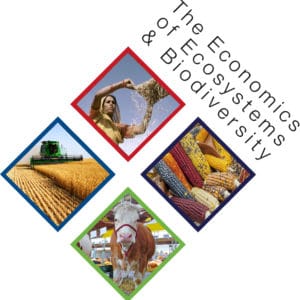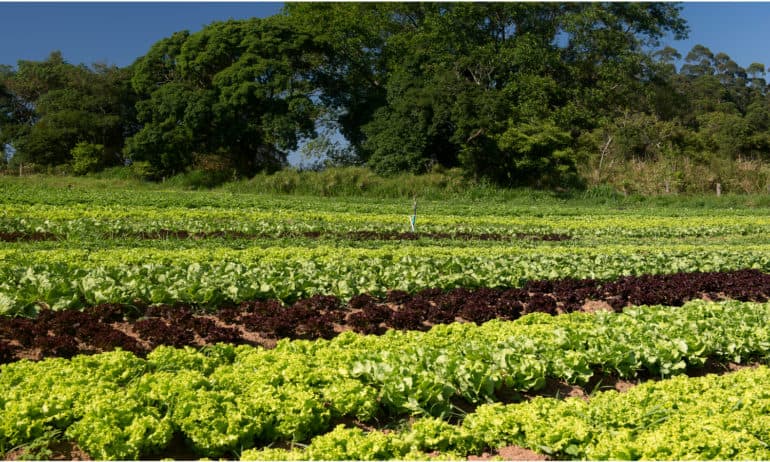Carl Obst is an economic statistician with over 20 years of experience building on a long career with the Australian Bureau of Statistics. He is a chapter author of the new report from The Economics of Ecosystems and Biodiversity for Agriculture and Food (TEEBAgriFood). This report evaluates the world’s global agriculture and food systems while considering a range of social, human, and environmental dimensions across the value chain.

Carl is now the Director of the Institute for the Development of Environmental-Economic Accounting (IDEEA Group) and was a lead author and editor of the United Nation’s System of Environmental-Economic Accounting (SEEA). He has also worked on economic data and sustainable development indicators with the Organisation for Economic Co-Operation and Development (OECD) and currently is an honorary fellow at the University of Melbourne’s Sustainable Society Institute (MSSI).
Food Tank sat down with Carl to discuss the TEEBAgriFood Report’s Framework and how it can be used to move towards a comprehensive evaluation of eco-agri-food systems.
Food Tank (FT): What is the most interesting thing you learned from working with TEEBAgriFood?
Carl Obst (CO): The great thing about TEEBAgriFood is the different disciplines working together. There are sections on health perspectives, systems thinking, and theory of change, in addition to the ones that you’d commonly associate with measuring agriculture and the environment. It is fascinating to see how these all link together and the benefits from trying to understand other people and linking perspectives together.
FT: What is the most significant unintended consequence of our current food system that policymakers, funders, and donors ignore?
CO: For me, unintended health outcomes are the most significant ignored consequence. Of course, negative environmental effects are also clearly significant and unintended. However, it’s surprising how pervasive the impacts on human health are when you start to consider the type of food we produce and the way in which it is distributed, sold, and marketed. Of course, we know that food systems provide nutrition, and we also know that food choices can lead to significant adverse health outcomes, but bringing both aspects into the equation at the same time really highlights significant unintended consequences.
FT: How is the TEEBAgriFood evaluation different from other methods?
CO: The great thing, albeit a challenge, is that it engages with the complexity of the issue. The TEEBAgriFood report doesn’t shy away from the idea that it’s doing something that’s difficult. Most commonly, approaches might pick one, two, or maybe three aspects to address, whether it’s an environmental domain, community or social aspect, or a value chain issue. To bring it all together into one place is really unique, and that’s essential to moving forward.
FT: Why look at our eco-agri-food system in its entirety—the systems approach—instead of just deconstructing it to focus on specific issues?
CO: My short answer is that’s the way the world works, the real world isn’t broken up into little bits. The scientific method leads us to believe that we must look at the parts of a problem, rather than the whole problem itself, and clearly that is great for understanding how those parts work. But the world is complex and if we want to make decisions about it, we must deal with complexity. That’s why a systems approach makes sense. It’s not easy, but unless we try to join the parts together, we’re not going to get a full picture. A systems approach also allows us to compare different studies. Commonly you will have different approaches, they will look at slightly different parts, in slightly different ways, which reduces their comparability and ultimately reduces the chance that the information will be used in decision making. The benefit of taking a systems approach is you can look through the same range of factors in every situation, giving a strong basis for comparability to build solutions.
FT: What are the advantages to developing a universal and comprehensive evaluation framework and what were some of the difficulties you encountered?
CO: It’s all about comparability. If a decision-maker is trying to make a choice, whether that’s producing one crop versus another crop, or using a different technique, and whether they’re a farm-level decision-maker or someone at a government-level, they’re making choices between different possible actions. If you can’t reliably compare different choices in a comprehensive way, then your decision is naturally constrained. The idea of having something that is universal and comprehensive allows for comparability. The report develops a common language, allowing for cross-sectoral communication. The real advantage of the framework is that it presents information in a way that allows decision-makers and experts to talk to each other and develop the best advice for any situation.
FT: Why is it important to develop policies and business strategies based on the TEEBAgriFood research?
CO: This depends on personal beliefs and what you think is important. You could give a standard bureaucratic answer that evidence-based decision making is a good thing. A better answer is that a more comprehensive information base should drive and support more coordinated, universal, and more effective decisions. But most fundamentally, this work is important because it’s about the reality that human health, the environment, communities, and social networks are important. It’s not just about the economics. Considering all the factors when making a decision in any given circumstance is the right thing to do.
FT: What do you want people to know most about the TEEBAgriFood report?
CO: Three things: First I want people to see the report as the next generation of thinking, building on all of the excellent work in many disciplines that’s happened to date. Other experts should know that they don’t have to reinvent their world, but should see this report as another step forward in their work. Second, this report requires a change in perspective. We need to take a broader view, using a systems perspective to move forward. Third, this is a journey that will require everyone to work together. These problems cannot be solved by one set of experts working in a silo. Instead, it requires the joining of expertise and communities, which is embodied in the TEEBAgriFood philosophy and approach.
This really drills down to the heart of it for me personally, I’ve been working on integrating different issues around sustainability for over 20 years, and it can be endlessly frustrating. But it’s also endlessly encouraging to see what’s possible when people put their minds together. There is a long way to go in the agriculture space, but it is important to remember that there is also positive momentum. This report is an important step in the puzzle of how our food and agricultural systems all fit together.
Click HERE to download the TEEBAgriFood Report
 The goal of TEEBAgriFood is to more comprehensively determine the costs, benefits, and dependencies of agriculture and food production. What makes some produce less expensive in most supermarkets is in part the use of cheap—often subsidized—fertilizers and pesticides, but that retail price does not take into account hidden costs like environmental damage from runoff or human impacts on health and livelihood. Conversely, these prices do not recognize the positive benefits created by more sustainable forms of agriculture. To ensure the sustainability of agriculture and food systems, an important step is to account for the side effects, or externalities, through market mechanisms. TEEBAgriFood is creating a framework for looking at all the impacts of the ‘eco-agri-food’ value chain, from farm to fork to disposal, including effects on livelihoods, the environment, and health. This can help farmers, decision makers, and businesses more explicitly look at the impacts of different practices and policies
The goal of TEEBAgriFood is to more comprehensively determine the costs, benefits, and dependencies of agriculture and food production. What makes some produce less expensive in most supermarkets is in part the use of cheap—often subsidized—fertilizers and pesticides, but that retail price does not take into account hidden costs like environmental damage from runoff or human impacts on health and livelihood. Conversely, these prices do not recognize the positive benefits created by more sustainable forms of agriculture. To ensure the sustainability of agriculture and food systems, an important step is to account for the side effects, or externalities, through market mechanisms. TEEBAgriFood is creating a framework for looking at all the impacts of the ‘eco-agri-food’ value chain, from farm to fork to disposal, including effects on livelihoods, the environment, and health. This can help farmers, decision makers, and businesses more explicitly look at the impacts of different practices and policies











